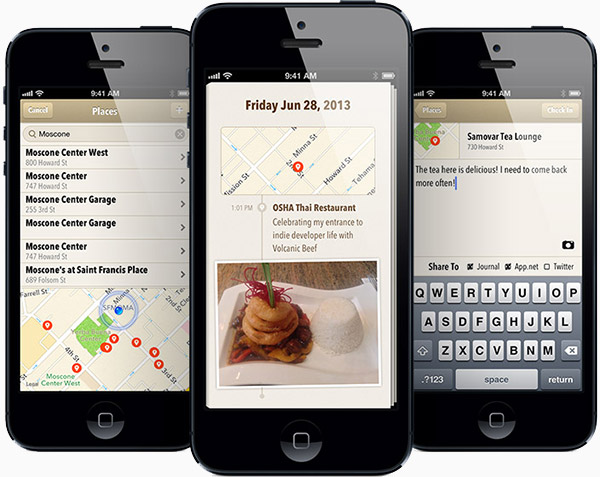About three years ago, I had a simple idea. I wanted an app to keep track of the places I’ve been. Naturally I’ve tried all the services for this, jumping from Gowalla to Foursquare to Path. But they all want you to broadcast your location, all the time. They’re focused on the experience of letting other people knowing where you are. There’s certainly value in sharing your location, but I wanted something that benefited me first.
I built a prototype of this app a few years ago, but it didn’t go anywhere. The secret sauce behind any check-in app is a database full of points of interest (or POIs, meaning places like businesses, restaurants, tourist attractions, etc.), and mine was no different. I didn’t want to rely on a free API of places that could evaporate at any time. Buying API access to one was prohibitively expensive. And shipping without one meant checking-in became a huge data entry process that was not fun. The project got shelved.
Then, a few months ago, my friends over at App.net announced a new API for finding POIs, and attaching metadata about places to posts and private messages. A few months before, they released an API for, among many other things, creating a private timeline of posts for individual accounts. I saw both a way to get a sustainable POIs database and cloud storage for check-in data.
And thus, Ohai was born.

Ohai lets you save location check-ins with photos to a beautiful and simple digital journal. You can share them to App.net and Twitter if you want, but you don’t have to. All of your check-ins and their photos are stored safely in a private part of your App.net account. And App.net is a sustainable API in service of their customers and developers, so I can rely on it for a long time. Of course, this requires an App.net account, which you can get for free by downloading the App.net Passport app. You can store as many check-ins as you like, and a few hundred high-resolution photos. If you want more photos, you can always upgrade to a paid App.net account.
One other cool benefit of using App.net for the backend is that the data specification is publicly available. This means other developers could build apps that recognize your journal. So, if the developer of your favorite camera app adds support for Ohai journals, they could save those photos into your journal. Then, the next time you open Ohai, those photos are available. Other developers could build journaling apps for other platforms like Android, or even write competitive apps for iPhone. You as the user would not have to export your data and re-import it; it would just all appear when you logged in. It’s a wonderful deal for customers to have no lock-in at all, with open data standards for interoperability.
Ohai was a pretty quick app to write, and as a result some bugs shipped in the 1.0 version. If you check-in to a place without leaving a comment or a photo, that check-in won’t appear in your journal (but it is saved). If you tap on the right side of the check-in button, it’ll accidentally turn the page instead. And the build, which ran fine on iOS 7 beta 2, crashes at launch on iOS 7 beta 3. All of these bugs will be fixed in the first update which I will be submitting immediately.
I’ve wanted to write Ohai for years, and I’m very glad to finally be able to share it with you as my first app as an indie developer. I hope you will check it out. It’s available for $4.99 on the Ohai web site and the App Store.


